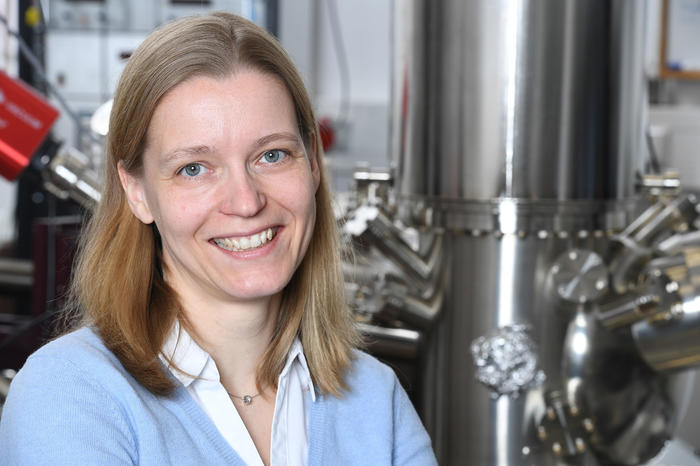AG Franke
Experimental Nanophysics
Prof. Dr. Katharina J. Franke
Room 0.3.21
14195 Berlin-Dahlem
The research of our group is focussed on the resolution of physical and chemical properties of single molecules and nanostructures at surfaces. Many of these properties are influenced by small details in the atomic-scale environment. These specifications may lead to rapid quenching of elementary excitations, may inhibit or modify molecular functions (e.g. molecular switching), change the magnetic state of single atoms or molecules, etc. Our research aims at characterizing and gaining control of properties at the nanoscale. We employ low-temperature (1.2 K, 4.5 K) scanning tunneling microscopy (STM) and atomic force microscopy (AFM) in ultra-high vacuum for our investigations. The large stability and high energy resolution allow us to perform local spectroscopy for the detection of electronic, vibrational, and magnetic properties of single atoms and molecules on surfaces.
One major topic of our group is the interplay of magnetism and superconductivity. The magnetic moment of an adsorbate couples via exchange interaction to the conduction electrons and Cooper pairs of the substrate. On the one hand, this leads to the screening of the magnetic moment via the so-called Kondo effect and, on the other hand, to a change in the pairing energy of the Cooper pairs, which is reflected in electronic states inside the superconducting energy gap. The competition of these processes yields a complex many-body state, which we resolve using scanning tunneling spectroscopy and manipulate by construction of appropriately designed nanostructures.
Other research lines are specialized to show that intriguing new properties and functionalities can arise from complex molecule-electrode junctions. We are able to spatially resolve molecular adsorbates on the atomic scale and detect their molecular orbitals and their vibrations. Our special attention lies on transport phenomena through single molecules. These determine their conductance properties but might also invoke switching events and bi-stabilities. We also monitor the conductance and forces exerted on the STM tip while controlling external parameters (electric field, bias voltage) and during electron- induced molecular switching (conformational, charge state).
Our main funding comes from the German Research Council (DFG) through individual projects and the collaborative research program CRC/TRR 227 "Ultrafast Spin Dynamics". The European Research Council supports our research with an ERC Consolidator Grant "NanoSpin".

